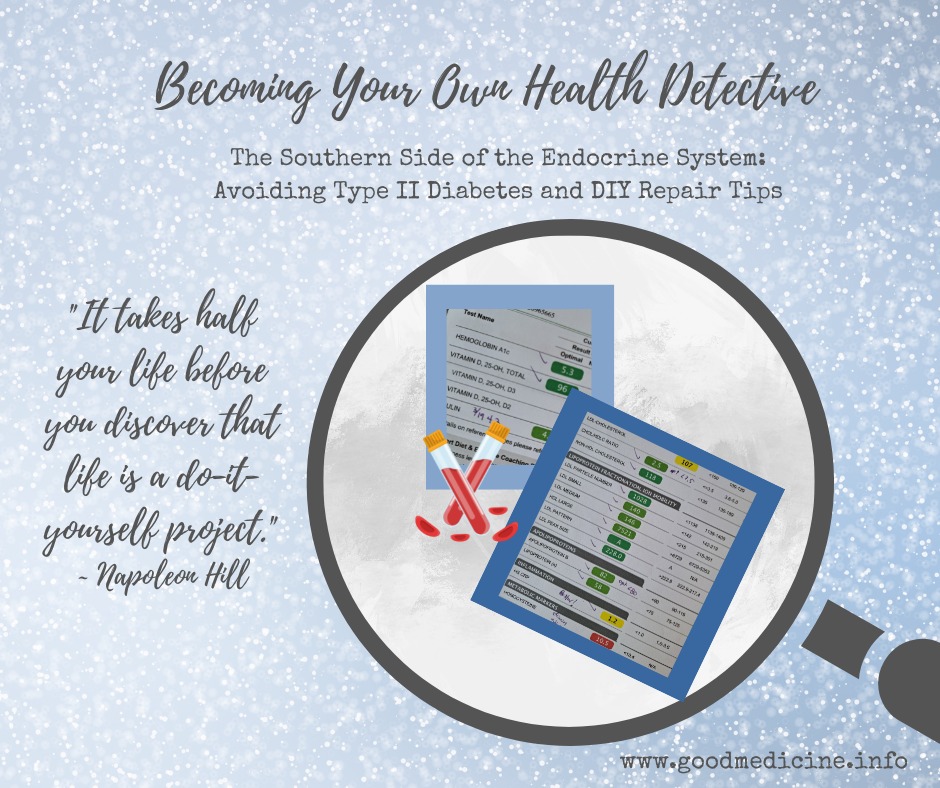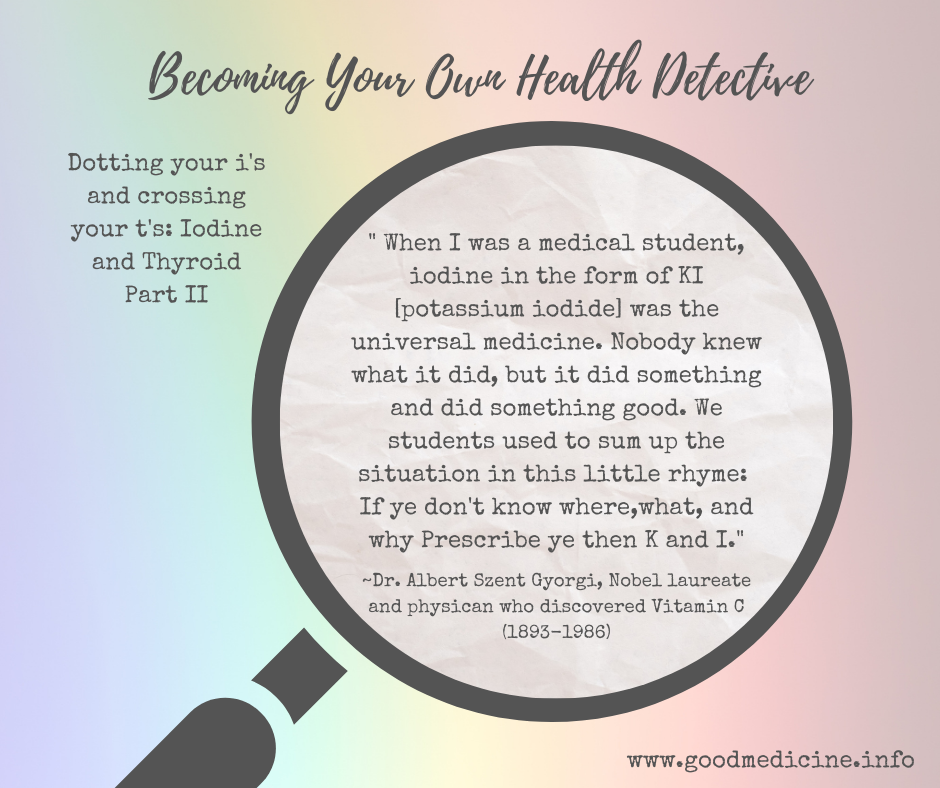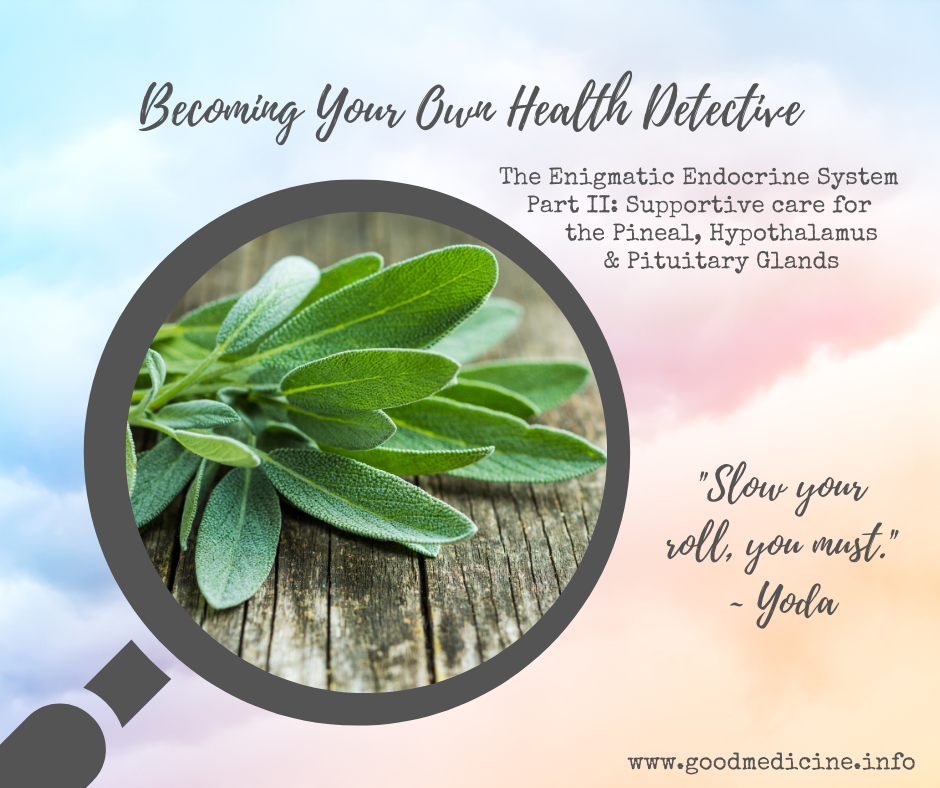
There are times it’s not good to be Number One. This is one of those times. The United States is recognized as being among the nations with the best medical technology and the newest and best drugs. We spend more per person on healthcare than any nation in the entire world, so we should be among the healthiest, right? Yet, for all that we have, the USA has the worst health outcomes.. We are #1 in diabetes, #2 in neurodegenerative diseases, #5 in cancer, and #6 in cardiovascular disease (source: Organisation for Economic Co-operation and Development).
An estimated 1 in 3 American adults have prediabetes or metabolic syndrome (both are precursors to Type II diabetes). It’s a common but flawed thought that Type II diabetes only affects “fluffy” people. It doesn’t. There is a relatively new medical acronym called TOFI, which means “Thin on the Outside, Fat on the Inside”, and TOFI individuals can be just as much at risk as their fluffy counterparts. Lifestyle choices will always be the first line of defense to avoid acquiring a Type II diabetes diagnosis (or succeeding in backwalking out of one).
An astute detective will need some internal monitoring tools to more closely assess clues. Health thieves can be very stealth, and this is a reliable way to monitor gang movement before they leave visible gang “tags” (clues). Forewarned is forearmed! Think of this as another tangible aspect of your body’s security monitoring system.
Here’s what you’ll need:
-
An at home blood pressure cuff (every home should have one anyway!)
-
Know your waist circumference (measure at just above the hip bone, level with the belly button)
-
Know your family history. Remember that though genetics are important, they play less than a 10% role in outcome. Environment, lifestyle choices, and emotional tendencies control the other 90%. It’s important to know family history so that we can each be vigilant for what we suspect may be lurking in the shadows…. Knowing the health thief tendency (genetics) may be awaiting the right opportunity to steal, kill and destroy. I find a great deal of peace knowing that 90% of gene expression is fully under my own control!
-
Get labwork annually which (at the very least) includes the following pieces of information:
-
Complete metabolic panel (CMP)
-
A basic lipid panel
-
Uric Acid and Homocysteine
-
Fasting insulin, fasting glucose, and HbA1c
-
The combined total of these tests will run about $250 well spent dollars out of pocket. If you have insurance, these are the tests to ask your doctor for when looking for a metabolic syndrome or prediabetes health thief.
-
NOTE: There is more labwork I’d suggest for a comprehensive look at the body from the inside out…. The above recommendation is specific for monitoring both prediabetes and metabolic syndrome.
-
Signs of metabolic syndrome and prediabetes nearly always predate diabetic symptoms. Once you have your lab work, and have gathered your other tools, you’re ready to take a hard look at the state of the union of your body. Signs of metabolic dysfunction show up in the following ways:
-
Evidence of fatty liver
-
High blood pressure
-
High uric acid and homocysteine levels
-
High lipids in blood
-
High fasting insulin, HbA1c, and blood glucose
-
Monitor your blood pressure. For a week, take it before you go to bed, and again before you get out of bed in the morning. If nighttime and morning blood pressure is higher than it should be, cut out all forms of sugar for a week, and retest. Sugar is highly inflammatory and often drives blood pressure upwards. Normal blood pressure runs 90-120 systolic (top number) and 60-80 diastolic (bottom number). High blood pressure is a symptom, not a root cause!
-
An increased waist circumference (males should be under 40 inches and females should be under 35) is suggestive of inflammation, probable leaky gut, mitochondrial dysfunction, and insulin resistance.
-
Uric acid and homocysteine are inflammatory markers. Levels are elevated if uric acid is over 5.5 mg/ml and homocysteine is over 10 umol/ L. High uric acid levels lead to a fatty liver. Sugar is a big contributor to this. High homocysteine levels indicate an increased risk for developing heart disease and vascular inflammation. Methylated B12 and methylated folate, omega 3’s ( OmegaGize3 is a great option), and optimized use of Vit D3 are all helpful tools in supporting healthy homocysteine levels.
-
Within your CMP, you’ll look for two numbers corresponding to AST and ALT. ALT is a liver enzyme which is fairly accurate for assessing fatty liver. If that number is over 25, more investigation is needed. AST is another liver enzyme. If it’s elevated (over 34) it may also indicate fatty liver (it also elevates when exposed to too much acetaminophen, alcohol, certain meds such as statins, and infection….. So do take that into consideration). If both are elevated, it’s definitely time to take a hard look at sugar and alcohol consumption.
-
Fasting glucose by itself is not enough, and sadly it’s often the only thing that is tested routinely. HbA1c is a window into the last 3 months of glucose control within the body. Fasting insulin indicates how well the pancreas is actually able to keep up. Optimally, fasting glucose should be 70-85 mg/dL, HbA1c should be less than 5.4%, and fasting insulin should be less than 6 uIU/mL. Once you have those numbers, you’ll plug them into this equation: fasting glucose x fasting insulin divided by 405. Your answer to this equation is your assessed risk for developing diabetes. Less than 2.8 is excellent, 4.3 is average, and anything higher is a flag that mayhem is likely already occurring.
-
When you are looking at your lipid panel, zero in on 3 different clues. The first is the ratio of triglycerides to HDL. Studies have found that if this number is over 2.5 in the Caucasian population or 1.5 in the African American population, it tends to correlate with metabolic syndrome.
The second thing to look at is HDL, the type of cholesterol that is considered “healthy” cholesterol. If it’s between 60-85, it’s generally a sign of good cardiovascular health. If the number is under 40 in men or under 50 for women, there is a greater chance of developing heart disease (a component of both metabolic syndrome and cohort of Type II diabetes). If the number is over 85, there’s a distinct possibility that HDL has a dysfunctional component.
The third thing to evaluate is your LDL cholesterol. If it’s between 100 and 300, look at your triglycerides. “If triglycerides are over 150, metabolic syndrome may be assumed until proven otherwise. “ (Those wise words are from Dr. Robert Lustig MD and his brilliant book Metabolical)
Isn’t it prudent to avoid dark alleys and always lock your car? The same can be said for paying attention to these health clues. If the numbers above look like a dark avenue you’re not wanting to go down, here are some tips and tricks for avoiding shady areas!
-
Cut back on carbs and sugar. Eat a low sugar high fiber diet. If you are not getting enough fiber in your diet, add YL’s ICP Daily, Balance Complete, or Power Meal to your nutrition world. Fiber helps regulate blood sugar levels by slowing down the release of glucose into the bloodstream.
-
Avoid high fructose corn syrup like it’s the plague….. Because it is! It is a strong inducer of insulin resistance. When you start reading labels, you’ll be surprised at how many places it hides in plain sight.
-
Avoid energy drinks that combine caffeine with fructose. That combination can aggravate insulin resistance and glucose intolerance. Use NingXia Nitro for a cleaner energy boost option. Try pairing Nitro with diffusing or wearing the essential oil blend En-R-Gee.
-
Exercise! Many studies have shown that weight loss and exercise can increase the body’s sensitivity to insulin.
-
Diet matters just as much as exercise. A person will never be able to out run, out supplement, or out medicate a bad diet!
-
Consider intermittent fasting. (If you are already on medication for diabetes treatment, you’ll want to talk to your holistically minded health professional before incorporating intermittent fasting into your routine). At the very least, stop eating 3-4 hours before your head hits the pillow at night.
-
Know your labs, and don’t be afraid to ask for them by name!
-
Watch your commercial dairy intake. There is a big difference between commercial pasteurized and homogenized dairy and raw dairy. The former is well known for the amount of inflammation it can cause within the body.
-
Work towards decreasing inflammation within the body. Sulfurzyme not only helps support normal metabolic function within the body, it also helps regulate a more normal inflammatory response. It is one of my top five Young Living Supplements that I cannot imagine life without.
-
Take an excellent highly bioavailable multivitamin such as Master Formula. Not all vitamins sold are bioavailable to the body.
-
Incorporate insulin modulating foods into your diet. Cinnamon, oat bran, fiber, ginger, barley grass (found in Multigreens), spirulina (found in Multigreens and NingXia Greens), chaga mushrooms, rosemary, green tea, cranberries, blueberries, lemon balm (Melissa), holy basil (tulsi), carrots, broccoli, asparagus, cauliflower, cucumbers, cabbage and salad greens. Healthy whole grain foods such as YL Einkorn products, quinoa, whole oats or oatmeal, and brown rice are also helpful, as are avocados, olive oil, and nuts and seeds. Cacao (natural chocolate) may also help regulate blood sugar levels according to a 2017 study.
-
Regular cold exposure also appears to help improve insulin sensitivity. Interestingly, Type II diabetes is positively associated with living in ambient temperature climates. Get your health care professional’s blessing if you have a medical condition (ex: high blood pressure or heart disease) that is being actively treated before partaking in cold showers, cold plunging, or cryotherapy.
-
Know your iron and ferritin lab values: According to a few studies, it would appear that iron levels that are too high have been positively associated with insulin resistance.
-
Take a closer look at adding turmeric to your routine. It has been found to be a helpful supplement to those who are taking the medication Metformin, and has supportive effects on blood glucose, oxidative stress and inflammation. (YL’s Golden Turmeric is my go to for a turmeric supplement!)
-
Vitamin B12 in the form of methylcobalamin to support a healthy homocysteine levels.
-
Antioxidants! (NingXia Red and Super C)- A 2007 study in the Journal of Hypertension found that people who took adequate levels of Vitamin C had a 13% lower risk of developing diabetes.
-
Approximately 75-80% of US residents are deficient in magnesium. A deficiency in magnesium sets the body up for both insulin resistance and gout (the official diagnosis for the painful symptoms of high uric acid levels in the body).
-
While it’s important to avoid as many toxins in daily living as possible, make a special effort to avoid atrazine (an herbicide commonly used on corn) and pesticides in general. Eat organically to avoid these.
-
Give up the night owl tendencies. Research has found that those who stay up late have a reduced ability to use fat for energy. When fat isn’t used appropriately in the body, it becomes fodder for health thieves. Work towards being in bed by 10pm.
There is so much more to prediabetes, Type II diabetes, and metabolic syndrome…..more than I could possibly write here. Hopefully though, I’ve given you food for thought and a desire to learn more. If so, do some digging and think outside the box! The more you know, the more health empowered you’ll be. We have full control of this part of our health story. How will you choose to write yours?
xoxo~ liz


